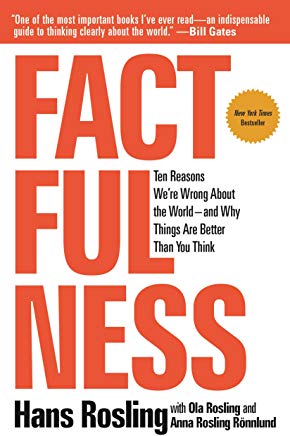

This article is an excerpt from the Shortform summary of "Factfulness" by Hans Rosling. Shortform has the world's best summaries of books you should be reading.
Like this article? Sign up for a free trial here .
Curious about how people die from different causes? Learn different surprising death statistics, from airplane crashes to bear attacks to swine flu.
Death Statistic 1: Plane Crashes
Plane crashes are a recurrent source of fear (and receive wall-to-wall media attention when they do happen). There were 2,100 deaths per billion passenger miles at the dawn of the Aviation Era in 1929-1933.
Today, that figure is virtually zero: 99.999975 percent of commercial flights landed safely in 2016 (in other words, only 10 crashes out of 40 million flights). This is partially a result of better international cooperation: the 1944 Chicago Convention created rules around aviation safety and a common accident report so pilots, airlines, and governments could learn from crashes.
Death Statistic 2: HIV/AIDS
940,000 people died of HIV/AIDS-related illnesses in 2017, according to the World Health Organization. That statistic, when viewed in isolation, is certainly horrifying: 940,000 is a lot of people!
But your perception of the situation would probably change a lot if we told you that this figure was 1.9 million back in 2004 (the peak year for AIDS deaths). This means there has been a 51 percent decrease in AIDS deaths in less than two decades: something you would have completely missed if you had only looked at that one 2017 statistic. This is the Size Instinct in action.
Death Statistic 3: Infant Deaths
In 2016, 4.2 million babies died before the age of 1, according to the latest UNICEF data.
Obviously, that’s objectively awful: one case of infant mortality is one too many. But focusing solely on this figure causes us to lose perspective. In 1950, the number was 14.4 million, and the population of the world was much smaller. This means that both the absolute and relative number of infant deaths was far higher.
Death Statistic 4: Bear Attacks
A fatal bear attack in Sweden in 2004 received wall-to-wall coverage. But this inordinate focus on one incident obscured a crucial fact: this was the country’s first bear attack since 1902! The Size Instinct just made them seem far more likely and dangerous than they actually were.
Death Statistic 5: Swine Flu
Swine flu has generated a lot of panic, particularly in the media in Level 4 countries. During a two-week period in 2009, the disease killed 31 people worldwide. During that same period, 253,442 articles were written about swine flu: over 8,000 articles per death! Meanwhile, over 63,000 died of tuberculosis, mostly in level 1 and Level 2 countries, but swine flu received 82,000 times the coverage.
Death Statistic 6: Diarrhea
As mentioned above the Size Instinct causes us to overestimate relatively minor sources of suffering (like swine flu) at the expense of widespread causes of suffering and death. For all of the attention devoted to terrorism, simple diarrhea is a much greater source of danger, killing over 2,000 children in Level 1 and 2 countries daily (more than AIDS, malaria, and measles combined).
Death Statistic 7: Terrorist Attacks
We overestimate dramatic events that are highly unlikely. For example, terrorism deaths are almost non-existent in rich Level 4 countries, under 1,500 from 2007 to 2016. Compare that with the 69000 people per year killed by alcohol during that same period in the United States alone.
———End of Preview———

Like what you just read? Read the rest of the world's best summary of Hans Rosling's "Factfulness: Ten Reasons We're Wrong About the World" at Shortform . Learn the book's critical concepts in 20 minutes or less .
Here's what you'll find in our full Factfulness summary :
- Why we evolved to be negative, and why it's terrible for us today
- Surprising statistics about how people die - from plane crashes to swine flu
- How the world isn't nearly as poor as you think it is
- How to think smarter about the world, and the rest of life






